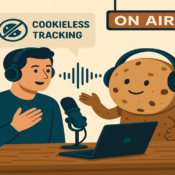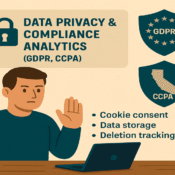
Cookieless Tracking & First-Party Data Strategy
Preparing Your Business for a Privacy-First Digital Future
We’ve all seen it coming - third-party cookies, the once-dominant tool of digital marketers, are on their way out. With growing privacy regulations and browser restrictions (looking at you, Safari and Chrome), businesses are facing a major shift in how they collect and track user data online.
So what’s next?
The answer: First-party data and server-side tracking.
Why Are Third-Party Cookies Going Away?
In simple terms, third-party cookies allowed advertisers to track users across multiple websites to build detailed profiles and target ads. But concerns about data privacy, transparency, and user control have pushed major browsers and regulators to phase them out.
For businesses relying on retargeting, attribution, and behavioral analytics, this is a big change—but it’s also a huge opportunity.
The Rise of First-Party Data
First-party data is information collected directly from your audience—through your website, app, email campaigns, surveys, or even CRMs. Unlike third-party cookies, you own this data. It’s more accurate, more reliable, and—most importantly—compliant with privacy standards like GDPR and CCPA.
Examples of first-party data include:
- Email addresses submitted via forms
- Purchase and browsing history on your site
- User behavior tracked using first-party cookies
- Preferences selected during sign-up or onboarding
Server-Side Tracking: A New Standard
Another powerful solution replacing third-party tracking is server-side tracking. Unlike traditional client-side methods that rely heavily on browsers, server-side tracking shifts the data collection process to your server.
Key Benefits:
- More accurate data: Fewer tracking errors due to ad blockers or browser restrictions.
- Enhanced performance: Lighter pages, faster load times.
- Better compliance: Greater control over what data is sent to third parties.
- Extended cookie life: First-party cookies set via server-side tracking often last longer than those set on the browser.
Platforms like Google Tag Manager (Server-Side), Meta's Conversions API, and GA4 are already pushing businesses in this direction.
How to Build a First-Party Data Strategy
- Audit your existing data – Understand what data you already have, where it’s stored, and how it’s used.
- Prioritize value exchange – Offer something meaningful (discounts, exclusive content, personalization) in return for user data.
- Invest in consent management – Ensure users understand and agree to what you're collecting.
- Implement server-side tagging – Start with tools like GTM Server-Side or work with experts to migrate gradually.
- Unify your data – Use CDPs or analytics platforms to connect user data across touchpoints and channels.
Final Thoughts
The cookieless future isn't a loss—it's a reset. Businesses now have a chance to build more trusted, direct relationships with their audiences. By shifting to first-party data and server-side tracking, you’re not only future-proofing your marketing but also aligning with the values of today’s privacy-conscious users.
The sooner you adapt, the more competitive advantage you'll gain.





Hi, this is a comment.
To get started with moderating, editing, and deleting comments, please visit the Comments screen in the dashboard.
Commenter avatars come from Gravatar.